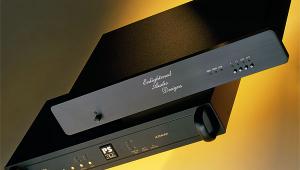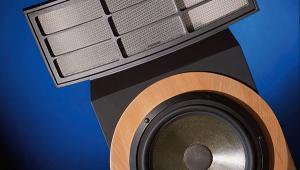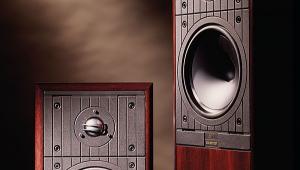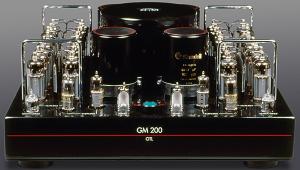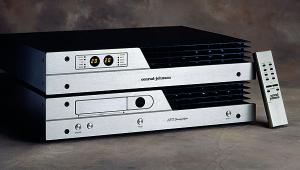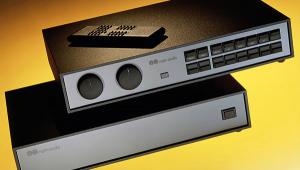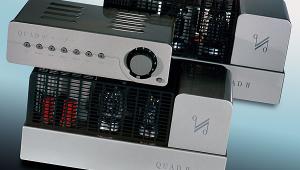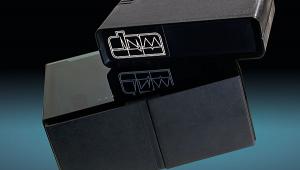DNM PA3 S Power Amp Page 2
In its ability to portray rhythm, the DNM PA3 S was exceptional, contriving to sound both upbeat and dynamically expressive. The bass was tight, agile and 'boppy', with a believable percussive quality. This was an interesting, detailed and musically involving performance. As a pre/power, despite the peak level limitations, it achieved a standard of performance that is truly audiophile.

Higher Learning
Although the DNM preamp was very good, it derived from an earlier generation design, and it turned out that the power amp performs to a still higher standard. Using the ART and other 'direct' signal sources, it was obvious that, in the PA3 S, here was something very special.
In isolation, the PA3 S was found to be close to neutral in tonal quality, in my view somewhere between the big Krell 600 and a Cary 805C SET. The midrange was exceptionally well balanced and, in truth, this even-handed quality was maintained over the entire audible frequency range. For example, in the treble it was highly resolved, very delicate, airy and neutral. As for the bass, within its dynamic compass and modestly limited extension, I rated it among the best.
Uncanny Ability
Given a reference-grade signal input, the PA3 S amplifier showed gains in transparency, attaining a 'very good to excellent' rating with well layered image perspectives. Exceeding its already satisfying performance on rhythm and dynamics, its timing now reached near textbook standard, so well did it 'lock in' both the performance and the performers. It also had the uncanny ability to make many competing power amplifiers sound rather blurred. Beginnings and ends of notes were superbly defined over the whole frequency range, while complex scoring was read cleanly with none of the usual mix-up between the instrumental lines when the music gets complicated.

This stable consistent clarity, and very fine dynamic expression, were both factors in imparting high musical involvement and satisfaction without the need for high listening levels. Aural fatigue was rated consistently low at moderate listening levels, though the sound thinned a little towards full power (not clipped, monitored with a peak power meter!). Bearing in mind its relatively small size and finite bass weight at very low frequencies, and knowing full well that floor-shaking musical events are beyond its compass, I am persuaded by its sheer musicality to rate this amp as pre-eminent in its class.
Lab Report
Since the regulated power supply is stabilised to a fixed value, output power may be precisely set, no more and no less. Thus, the PA3 S delivers precisely what is promised, being 13.6dBW or 23W into 8ohm loads. With both channels driven, there's about 1dB less output. Meanwhile, almost twice that power was available into 4ohm, and for this moderate powered amplifier, ample current was available. Even for 2ohm loads, more than 6A is generated, given due consideration to the self-resetting thermal cutout.
As for the output impedance, this was remarkably constant at about 0.25ohm, low enough to be inconsequential. The response runs from 36Hz-32kHz (±0.5dB). Simple measurements for total harmonic distortion gave very low residuals, better than 90dB midband at full power, while spectrum analysis was necessary to track down the distortion (typically –100dB for low and mid frequencies, and perhaps –81dB, or 0.009%/20kHz).

Conclusion
The PA3 S largely vindicates Denis Morecroft's assessment of negative feedback. He believes that although invariably it is a major source of problems, as long as extraordinary care is taken to overcome common pitfalls, and careful use is made of appropriate circuit topology, the application of negative feedback in a solid-state amp can be justified as a means of obtaining satisfactory linearity and load matching.
Through his efforts to bring several factors under his control, Morecroft has proved himself to be a highly committed designer who has achieved much. Innovations that testify to Morecroft's achievements include minimisation of stray induced currents; the painstakingly detailed optimisation of stability margins in the ultrasonic range to minimise the feedback signature; development of a unique 'T' network reservoir capacitor; and the use of costly active push-pull regulated supplies and 3D topology in a tiny, optimised amp kernel. The DNM PA3 S proves the validity of Morecroft's work very effectively indeed. Perfection in miniature, this reference quality power amplifier is highly rewarding musically. Despite its high pound-to-watt ratio it is easy to recommend. If, in practice, you find the PA3 S goes loud enough then look no further, unless you have a lot more to spend.







